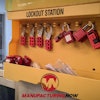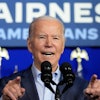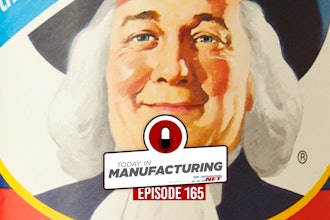WASHINGTON (AP) -- An economy growing 2 percent a year might be tolerable in normal times. Today, it's a near-disaster.
A growth rate of 5 percent or higher is needed to put a major dent in the nation's 9.6 percent unemployment rate. Two reasons why that's unlikely well into next year and maybe beyond:
-- Construction -- both residential and commercial -- collapsed last year. And it isn't expected to regain its strength for years. Typically after recessions end, construction booms and powers a new economic expansion.
-- The recession that began in December 2007, after the housing bubble burst, became the Great Recession once the financial crisis erupted in September 2008. Economic recoveries that follow a financial crisis are typically long-lasting. Banks usually take years to resume lending normally.
"To really get 'Morning in America' and get people feeling like jobs are really coming back, I would want to see something close to 5 percent" annual economic growth, says economist Josh Bivens of the Economic Policy Institute, referring to the iconic 1984 Reagan re-election ad.
That isn't likely to happen soon. Macroeconomic Advisers doesn't expect the labor market to recover all the lost jobs until at least 2013. Other economists say it could be 2018 or longer.
The government reported Friday that the nation's gross domestic product, the broadest measure of goods and services produced, grew at an annual rate of 2 percent from July through September. GDP had risen at an annual rate of 1.7 percent in the second quarter.
Economists say it takes GDP growth of 3 percent a year just to keep the unemployment rate from rising as more Americans reach working age and immigrants enter the country. It would take 2 additional percentage points of growth for a year to reduce the unemployment rate by 1 point.
Recoveries from deep recessions are usually robust. Once the recession of 1981-82 finally ended, the economy boomed in 1983 and 1984. During one stretch, GDP grew at an annual rate of 8 percent or more for four straight quarters. The economy generated 3.5 million jobs in 1983 and 3.9 million in 1984. The unemployment rate fell by a third in just two years, from 10.8 percent to 7.2 percent.
By contrast, since the Great Recession officially ended in June 2009, the economy has lost a net 439,000 jobs. The unemployment rate was 9.5 percent in June last year. Now, it's 9.6 percent.
The 1981-82 recession started largely because former Federal Reserve Chairman Paul Volcker raised short-term interest rates as high as 20 percent in 1980 to purge double-digit inflation from the economy. Restarting the economic engine was simple: Volcker cut short-term rates in half within a year.
Low rates worked their magic and fired up the housing market. That created jobs for construction workers, expanded the market for building materials and spurred consumer demand for appliances and furniture. Emboldened, businesses borrowed, invested and hired.
But cutting interest rates is no longer an option. The financial crisis was so severe in the fall of 2008 that the Fed slashed short-term rates to zero by December to prevent another depression.
Long-term rates have fallen sharply, too. Today, consumers and businesses are unable or unwilling to take on more debt, and many banks are reluctant to lend. Bank lending has dropped in five of the past six quarters.
And the housing market, normally a driver of job growth, is still reeling. The National Association of Home Builders expects builders to put up 605,000 houses and apartments this year. That's down more than 70 percent from the 2.1 million in 2005 at the peak of the housing boom.
"We can hope for strong growth, but it is not happening," says economist Joel Naroff of Naroff Economic Advisors. "A robust recovery was never possible because the problems in the housing and financial sectors were not going to disappear overnight."
Weakness in the financial system slowed recoveries from the previous two recessions as well. The 1990-91 recession was caused by a credit crunch that followed the collapse of the savings and loan industry and of commercial banks in Texas and New England. The recovery that followed remained erratic until 1996.
A stock market collapse, caused by the bursting of a technology bubble, triggered a mild recession in 2001. That recovery started even more slowly than the 2009-2010 version. And it didn't replace all the jobs that had been lost for nearly four years.
The 2008 financial crisis was the most destructive of all, which helps explain why the economy has remained so weak since the recession ended.
"These last three recessions are associated with financial market distress, which kept traditional levers from working," Bivens says.






















